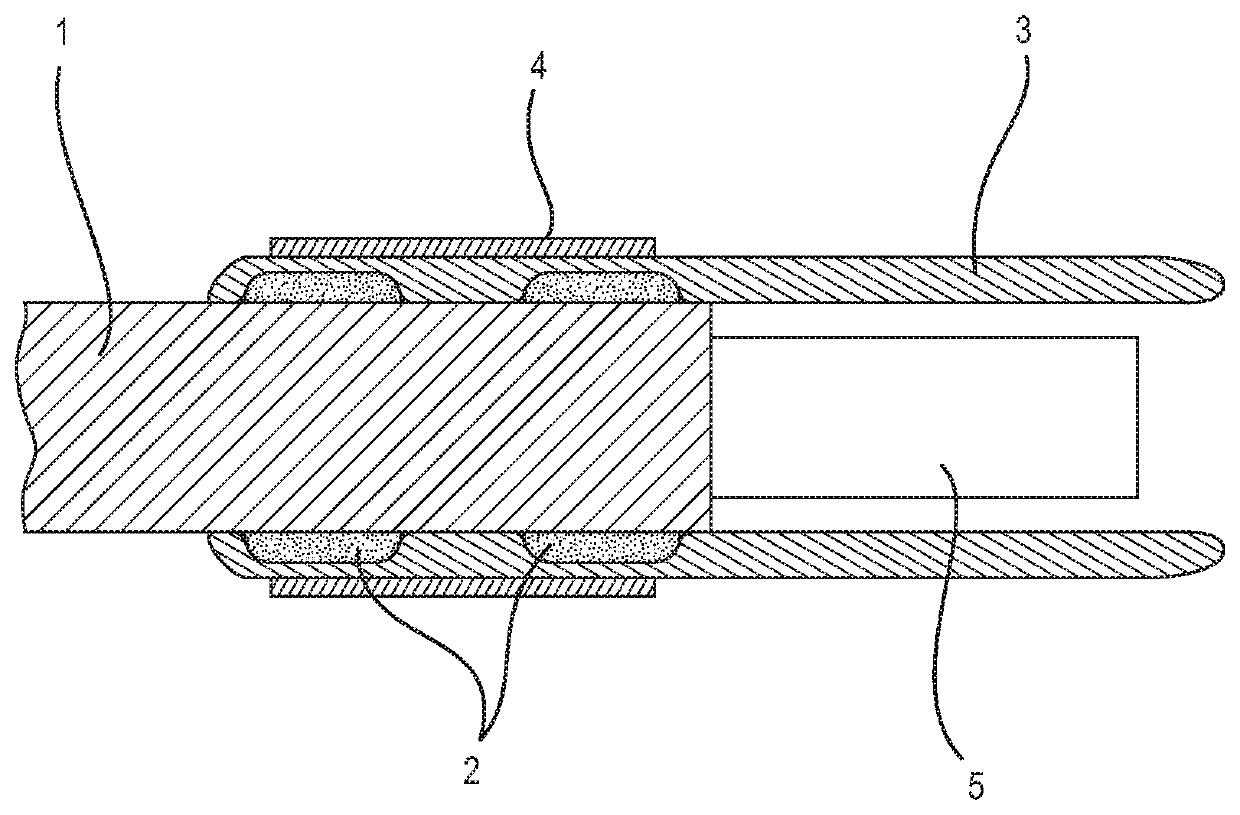Method of joining structures made of incompatible polymers
a polymer and polymer technology, applied in the field of joining structures made of incompatible polymers, can solve the problems of inability to meet the requirements of the etfe buffer layer,
- Summary
- Abstract
- Description
- Claims
- Application Information
AI Technical Summary
Benefits of technology
Problems solved by technology
Method used
Image
Examples
Embodiment Construction
[0022]Throughout the following description and drawings, like reference numbers / characters refer to like elements. It should be understood that, although specific exemplary embodiments are discussed herein there is no intent to limit the scope of present invention to such embodiments. To the contrary, it should be understood that the exemplary embodiments discussed herein are for illustrative purposes, and that modified and alternative embodiments may be implemented without departing from the scope of the present invention.
[0023]As illustrated in FIG. 1, a surgical laser fiber is stripped to expose a buffer layer 1 and a core or core / cladding section 5. A soft protective structure 3 having a generally cylindrical shape is to be attached to the end section of the buffer layer 1. The soft protective structure 3 may have a standoff structure of the type disclosed in PCT Publication No. WO 2017 / 192869 or Provisional Patent Appl. Ser. No. 62 / 648,108, in which the distal end of the protec...
PUM
| Property | Measurement | Unit |
|---|---|---|
| structure | aaaaa | aaaaa |
| viscosity | aaaaa | aaaaa |
| distance | aaaaa | aaaaa |
Abstract
Description
Claims
Application Information
 Login to View More
Login to View More - R&D
- Intellectual Property
- Life Sciences
- Materials
- Tech Scout
- Unparalleled Data Quality
- Higher Quality Content
- 60% Fewer Hallucinations
Browse by: Latest US Patents, China's latest patents, Technical Efficacy Thesaurus, Application Domain, Technology Topic, Popular Technical Reports.
© 2025 PatSnap. All rights reserved.Legal|Privacy policy|Modern Slavery Act Transparency Statement|Sitemap|About US| Contact US: help@patsnap.com

